The 21st Century on the Line
International students’ transformative learning experience: explore four major Jungian masculine and feminine energy archetypes, expand the attitude to human transformative leadership by becoming familiar with the concept of complexity, evolve the human leadership skills in the digital era.
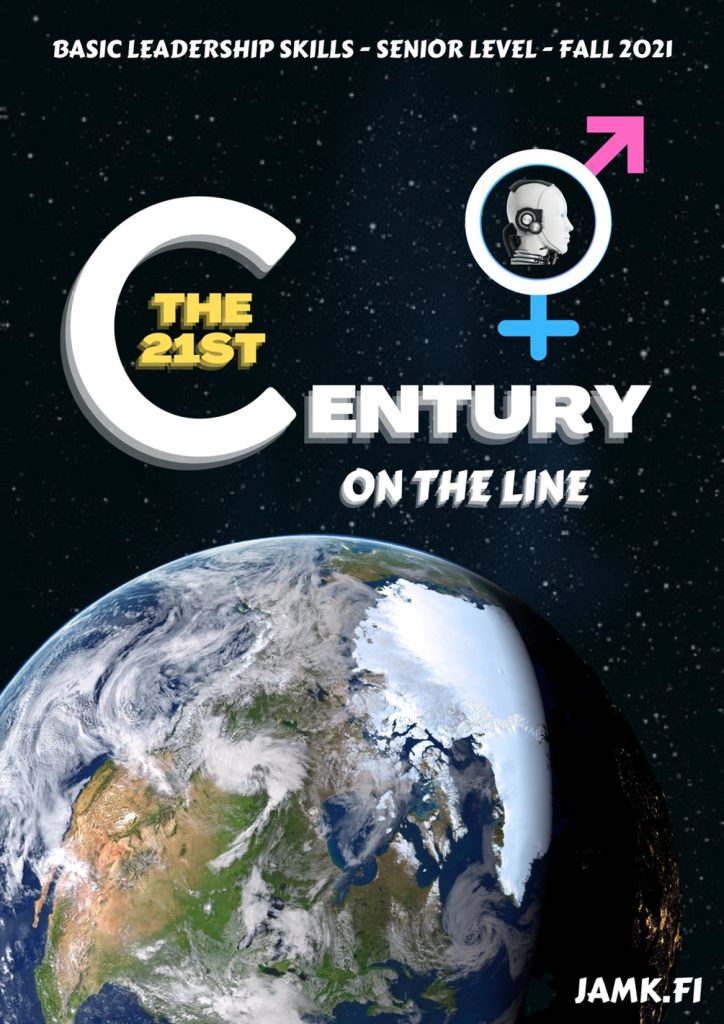
(description of the author available below the article-post)
Participants
Senior Lecturer-Author & Editor: Marcella Zoccoli
Student Author & Editor-in-chief Fall 2021: Henar Langa Chorda
Students Responsible for the Surveys creation and results’ presentation: Linda Geiger, Staneker Marie-Christin
Student Responsible for the Video realization: Kevadia Pranil Sanjaybhai
Student-Authors & Actors (name alphabetical order)
Fleury Arthur (Brazil), Netten Dennis (The Netherland), Langa Chorda Henar (Spain), Tapio Joona (Finland), Meunier Julie (France), Schmidt Kira (Germany), Ho Ky Anh (Vietnam), Geiger Linda (Germany), Zoccoli Marcella (Italy/Finland – JAMK University of Applied Sciences ), Staneker Marie-Christin (Germany), Olimpia A.I (PlanetEarth), Kevadia Pranil Sanjaybhai (India/Germany), Fermaud Tara (France), Mei Ulises (Argentina), Coeto Gardea Victor Adrián (México), Löhr Vincent (Germany)
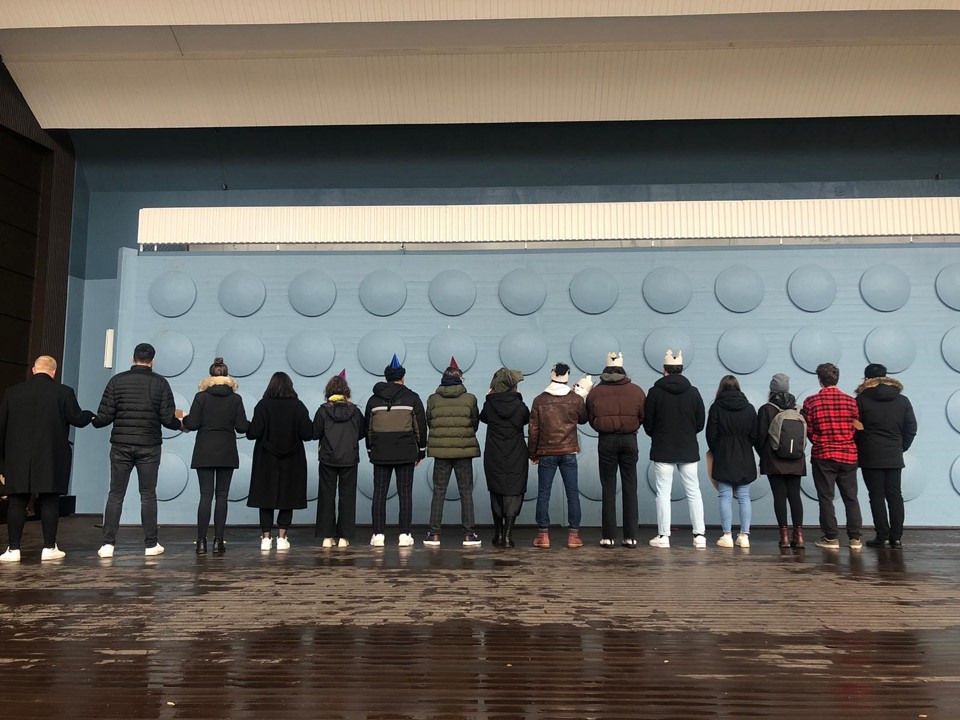
Our own picture was taken in one raining-snowing Wednesday in November at Lounaispuiston kesä, Jyväskylä, Finland
Prelude – an intro
For the very first time since its launch in Fall 2016, the Basic Leadership Skills course during the semester Fall 2021 was re-shaped by Marcella Zoccoli with two declinations: the *School of Human Transformative Leadership©* conceived in 2020 and co-created and piloted with 70 students in Spring 2021 and the Senior Leadership Level, a tailor-made leadership journey for a maximum number of 30 bachelor students with some previous studies in leadership or organizational behavior. The formula seminars+workshops included one-to-one coaching sessions with Marcella for the development of an individual leadership plan combined with collective works.
Our story and our experience begin on the 21st of September 2021. The first time we met with our teacher-trainer Marcella it was online, we realized that we were a selected vibrant small group with different interesting backgrounds and attitudes in learning leadership. At that moment, and as a result of a very healthy conversation in which we all gave our opinion, the idea arose of replacing the group works with a large final group project. A possibility we all had for the very first time including Marcella in this kind of educational journey as a student among her students!
Our Project Design & Development
‘’…Our story in the BLS-SL course is how we achieved a goal through leadership, how we can organize each other, and that the intervention of external factors can create a higher level of complexity to any task, we all have an archetype that leads our life, makes us follow the story that we write, but by letting the complexity of the situation get the best of us we can fall into the shadows of our archetype, we need to overcome them by using our arts and how we can communicate with ourselves and to the world. Technology can help us too in getting better in touch to others and AI can be seen as part of the future…’’ – Victor
We started the journey as an international community of 14 students, well actually, in total 16 learning entities considering Marcella and the extraordinary presence of Artificial Intelligence: Olimpia, represented by a white mask that Marcella thought to bring into this class – it was an inevitable and fortunate occasion to experience A.I. as a co-student/worker!
As the theoretical tradition of the course goes, we started walking the five movements of Theory U of Otto Scharmer (2006): co-initiating, co-sensing, presencing, co-creating, co-evolving, but with the innovation to experiencing the 4 +1 phases of the Mindful Leadership approach designed by our teacher Marcella in 2017, that includes: the flow, chaos, network, awareness, and the New Leadership MONDO phase added at the culmination of our transformative learning experience. The ”Leadership Fusion” framework was our way to encounter the challenges/the reality of the VUCA world and to respond to complexity by being active leaders!
With the aim to explore the unknown from multiple perspectives, to create a more creative, transformative, and inclusive project we used our arts & hobbies as pedagogical instruments: dance, gymnastic, hiking, playing piano, reading, singing, meditating, reiki, pilgrimage, playing football, cricket, volley, cooking, drawing, and coding.
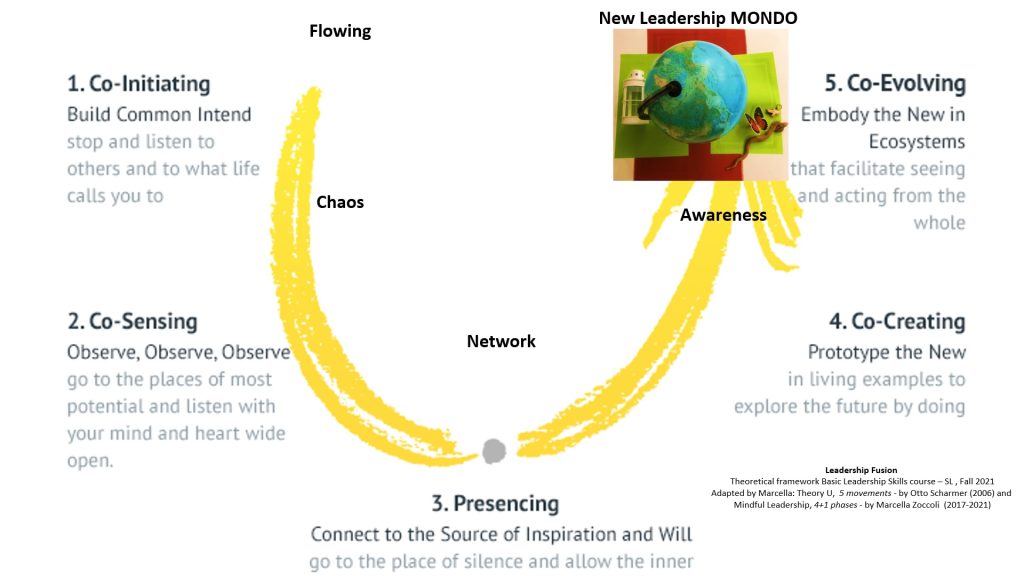
Image 3. Leadership Fusion.
Theory U, 5 movements – by Otto Scharmer (2006) and
Mindful Leadership, 4+1 phases – by Marcella Zoccoli (2017-2021)
In this project, we all had a voice and active participation, we vibrated with different intensities that align to form a very powerful learning living organism. We began to give our ideas, to write them down, and to meditate to discover how that work was going to be, how we were going to materialize it, to make it happen. Finally, we decided to take the first step, to create a working group to find a theoretical framework on which to build the foundations of our project. The people most advanced in academic studies (three master’s students: Marie-Christin, Linda, and Henar, together with Marcella) met on a Sunday, the 3rd of October. It was that day when we started working with an online meeting that would illuminate our ‘’academic way’’ to advance the project with the rest of the group. In that morning’s meeting, Marcella told us about Carl Gustav Jung’s analytical psychology and research. None of the students present at the meeting knew the work of this psychiatrist and psychoanalyst, but when the teacher began to talk about his Theory of Archetypes, it began to sound very interesting to us to build, analyze and understand the different facets of a leader from archetypes symbols instead of using the stereotypes characters of which often leadership is embedded. At this point we began to imagine how our project was going to be, we wrote everything that had to be shared with the class and in the next session of the course, we made progress on these parts with a vision: create a project, together, with big vibrations and learning/sharing to build and represent through the different archetypes of Jung the combination of the concept of Leadership to that of Complexity.
Movement 1 – Phase 1. Co-Initiating and the flowing phase: FLOWING together and building common intend
With the purpose to start reflecting on the difference between intentions and actions in Leadership, at the very beginning of our course journey, well before embarking on the adventure with archetypes, Marcella asked us to think about our own words related to leadership and to make them alive during the course journey. The collection of the words was so incredibly fitting with skills and values required in the leadership process in the 21st Century.
Improve, Guide, Teach, Grow, Assist, Dance, Space, Transfer, Life, Empower, Practice, and Accept are the words that emerged from our learning field. And we asked Marcella to Give, Help, Provide, Participate, Share, Be Part Of, Gift, Connect, Insight, and Empower us during our leadership experience.
Once we entered the world of Carl Gustav Jung and his theory on archetypes, we decided to present the idea to the class. It is important to remember that this is a human transformative collective project, and everyone must give his/her opinion and point of view in order to move forward. From here came the idea of creating a synergy between the archetypes, the leadership process, and complexity explored and influenced by our art, our hobbies, or our passions. To do this, we recalled some starting discussions had individually with Marcella during the check-in individual session days when she asked us about what motivated our leadership attitude, talent, or vocation. We began to investigate and learn about the archetypes, our aim was to study and apply archetypes to the leadership dynamics, not to the leader as an individual. In the preliminary exploration, we learn them by observing their energy applicable to leadership processes. The combination archetype-students was casually drawn by lot and it does not represent the personality of the student, but the role he/she played to act the script of the project. We searched the bibliography and shared what made us curious. This stage of learning took us to the next level of the journey, observation.
Movement 2 – Phase 2. Co-sensing and the chaos phase: observe, observe, observe – the CHAOS as a force to transform challenges into possibilities
Co-Sensing prelude: ”Do we know what is an archetype? Do we know the differences between archetypes and stereotypes in leadership? What about Female and Masculine Leadership?” What is Complexity? How to process Complexity through a Leadership process boosted by the energy of the Archetypes?…
Time to get going, work on our personal background and on what we learned during the first Leadership sessions. To observe the evolution of the class, we decided to launch a survey to all the participants of the project. This allowed us to observe, learn and retrieve useful data for the future of the project, concrete data from which to start. Linda and Marie-Christin prepared the first JAMK Webropol survey to get the pulse on the subject.
Five questions were asked:
1. What comes first to your mind when you think about FEMALE leadership? What are typical FEMALE leadership characteristics? (max. 5 choices)
2. What comes first to your mind when you think about MALE leadership? What are typical MALE leadership characteristics? (max. 5 choices)
3. What are your personal experiences with female or male leadership? (response in max. five sentences)
4. Do you know the different archetypes of Jung?
5. Do you know how to define stereotypes?
According to the responses we concluded that for us a female leadership is mostly compassionate and organized (both with 67% of the votes), it is also energetic (53%) as well as competent and confident (both adjectives with 47% of the votes). The rest of the qualities are below 40%, therefore we consider that they are less relevant, although equally interesting. For the male leadership, the results were different. The first quality to highlight according to the project participants has confidence (57%), followed by logical (50%), and with the same number of votes, we would have temperamental, opportunistic, and arrogant (43%). Below 40% we would have adjectives such as energetic, which coincides with the feminine (36%), and analytical (36%). Some as inept, organized, or compassionate have not received any votes. As we can observe, there are as many personal experiences with ‘leadership’ in the group as there are people. While some participants prefer their dealings with female bosses who have accompanied them along the way in a compassionate and judgmental style, organized and empathetic way. There are also those who consider that after having worked for both profiles they do not find notable differences in their characters or the way they work. Finally, in some answers we find definitions for male leaders as more autocratic, demonstration of power, assertiveness, and innovation, there are also those who find their profile more authoritarian. The good thing is most of the experiences are positive. And that means that the students of this course have references to begin to create their own leadership model. Here we had a little more difficulty, only 60% of the students in the class knew Jung’s theory and the archetypes. 20% had heard of it, and 20% had no idea what the theoretical framework was about. This survey response was very helpful in understanding where we were starting from. Marcella as a tutor had to lecture and introduce us to the Theory of Archetypes of Jung, she shared literature and resources so that we could delve into the subject. This ultimately proved very helpful. Finally, another weakness of the group emerged in the question ‘do you know how to define stereotypes?’ Because half of the class 47% answered (no / not exactly) and 53% answered yes, we received some more guidance on the subject from Marcella, readings, and information to be studied.
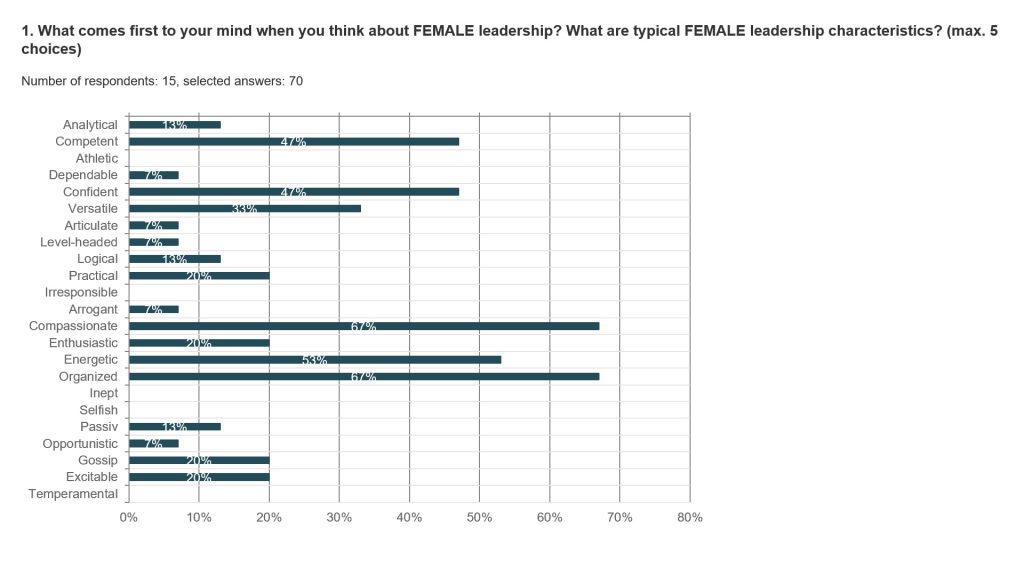
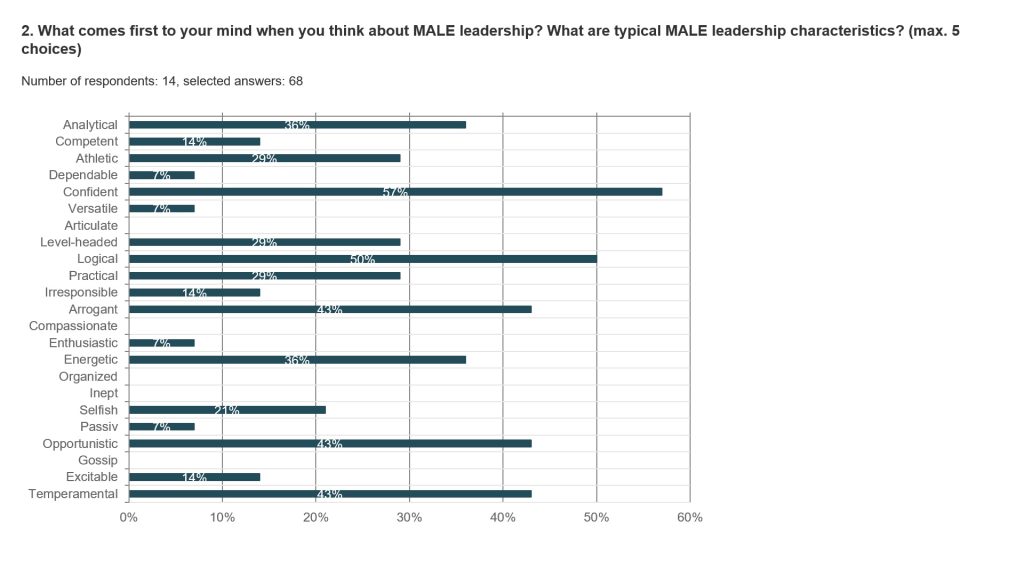
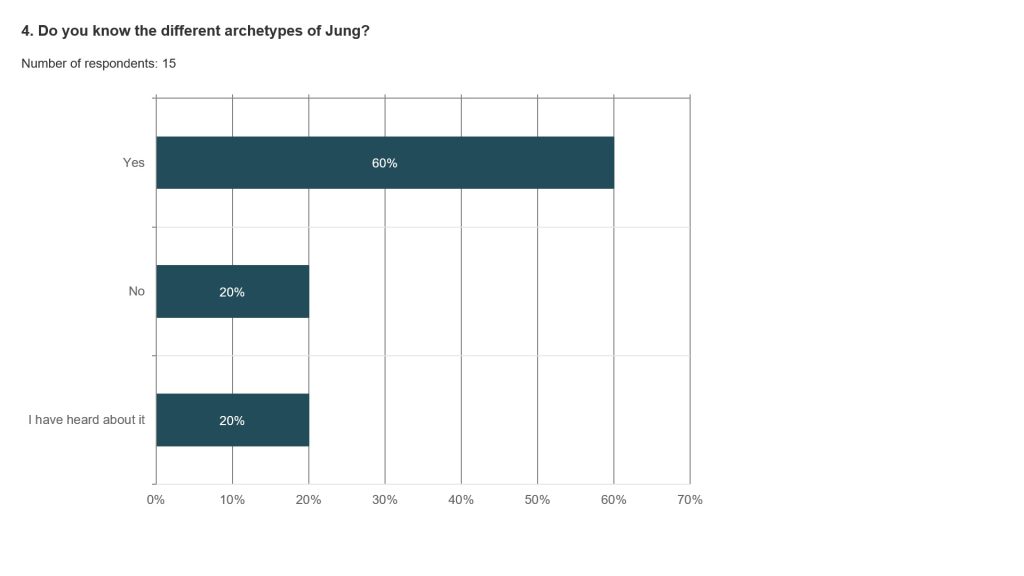
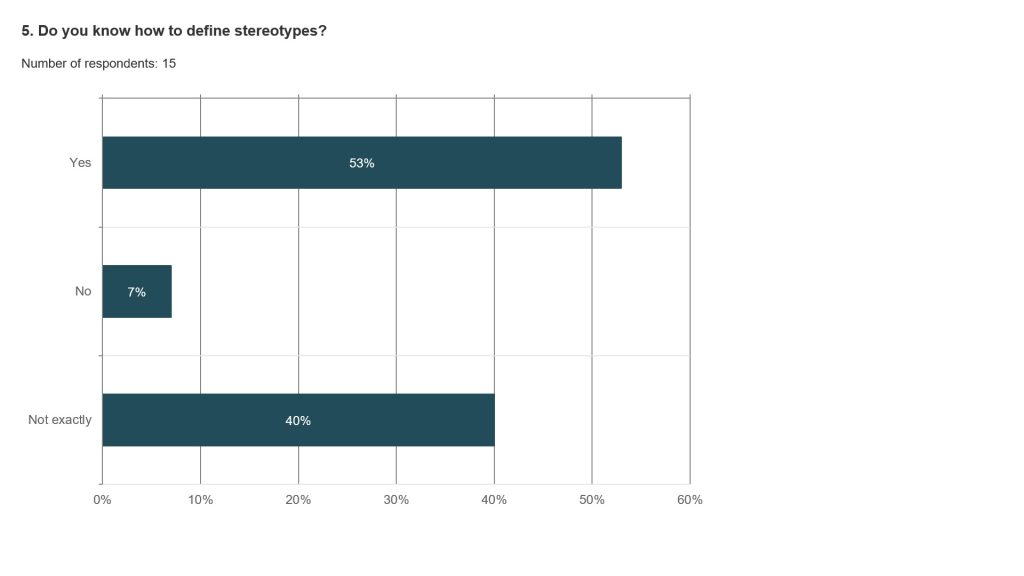
Movement 3 – Phase 3. Presencing and the networking phase – connect to the source of inspiration and will, the place where leadership meets complexity, the human roots, the arts, and A.I.: the NETWORK
Our Archetypes Units Network: we defined with words and represented with images the mature positive attributes and energy of our dedicated Archetype Unit and the way they can contribute to shaping our ”New Leadership MONDO” through arts and hobbies as in Marcella’s vision and according to the challenges of complexity, as in Anne Eskola words ‘‘the realm of unknown unknowns and the domain of emergent practice”.
To do it and co-create an awareness-based work, we had a look at the shadow forms of our archetype units and their ‘’energy’’: + active pole / – passive pole. Those declinations represent the challenges to the leadership process. As we already shared our work is meant as an experience, a realization of the project from the leadership process perspective and not the leader as an individual. The energy archetype poles interpreted by the actor-students do not represent their personality. We will discuss further the way we proceeded with our ‘’corto’’ video making design, but here are some conceptual examples of the direction:
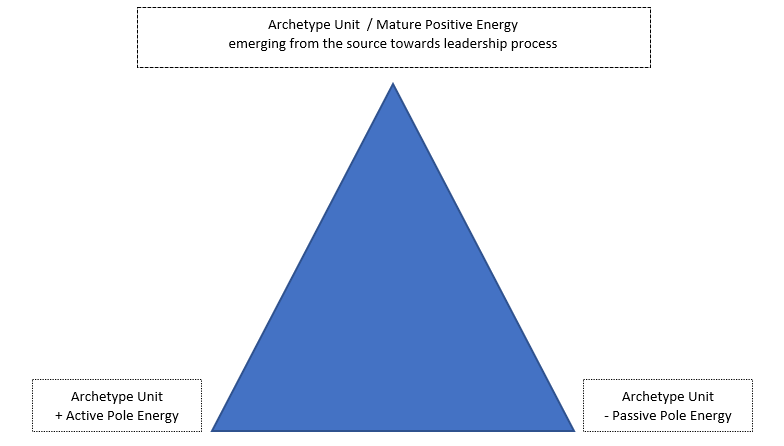
Defining Jung’s theory of archetypes is not easy, because Carl Jung himself has offered different perspectives to his research. For a general definition of archetypes, we can say that they are universal models that embody people, behaviors, or personalities, which play a role of influence on human behavior. For Carl Jung, archetypes represented archaic forms of human knowledge, universal patterns, images, and projections that are part of the collective unconscious: it is precisely on the basis of these archetypes that, for Jung, we inherit some instinctive patterns of behavior. We have chosen four of them: the Magician / Good Witch, the Warrior / Amazon, the Female Lover / Male Lover, the King / Queen and we represented them with their active (+) and passive (-) energy poles. We integrated artificial intelligence in one of them, to make this adventure close to our era – and we influenced their attitude with our personal artistic touch… this united attitude has shaped our unique, artistic leadership narrative. For a better understanding, all relevant male/female archetypes, with their lights and shadows and how they can be expressed in an artistic way are described below by units.
The first archetype unit is the Magician/Good Witch Archetype. The Magician as a Manipulator and the Witch as a Wise Woman are the active poles whereas the Magician as a Jester and the Good Witch as a Fool is the passive poles of this archetype. The Magician as the Manipulator uses the knowledge to control others, always transforming things in his own way for his own benefit. As a leader, he uses the weaknesses and desires of people to achieve success. He will use acting as a tool to convince others of his beliefs. He acts as if what they have to do is the best for the group, where in fact it only benefits him. The Good Witch as a Wise Woman uses the magic of the human transformative experience, she dances with her hat and cape through spirituality, business, and technology. She uses the creative force for a paradigm change and to empower people. She can transform herself and others into butterflies, eagles, or snakes. The Magician as the Jester has an interesting role in inviting others to partake in creating a self-joke form of satire. Humor is the most interesting tool this archetype can use to empower others. He will try to make everyone laugh even in inappropriate situations. He will often show a lack of self-control. The Good Witch as a Fool with a deep understanding of nature could control humans’ minds, changing nature to make magical potions. She is a chef, an actress who has fake situations to get what she wants.
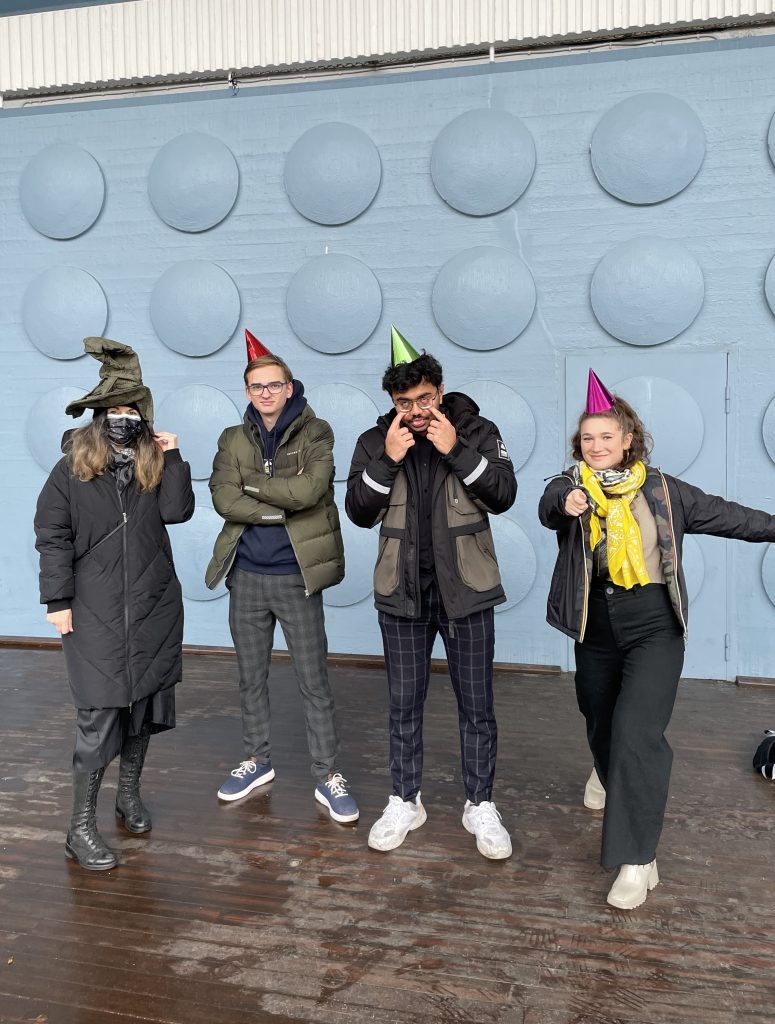
The next archetype we present is the unit of the Warrior/Amazon Archetypes. The Warrior as a Sadist and the Amazon as a Vigilante is the active poles whereas the Warrior as a Masochist and the Amazon as a Victim is the passive poles of this archetype. The Sadist Warrior tries to motivate people with critics and mercilessly punishes, he is very task-oriented. With the artistic corner reading, he learns new things, improves himself, and learns new techniques on how to lead others and inflict pain. The aggressive Vigilante Amazon is the most independent and goal-oriented of the archetypes, in the complexity, she is always focused on her goals while running.to be successful. The Warrior as a Masochist proves their responsibility in their work with the physical torment, stressful and rigid projects. While he’s drawing or doing photoshop designs he is developing challenging and enjoyable jobs for him. The Amazon in the form of the Victim uses pity to have the sympathy of others, she never trusts it is her fault and she has a lot of confidence. Playing the piano can evolve everybody in her story and feel the empathy of the public.
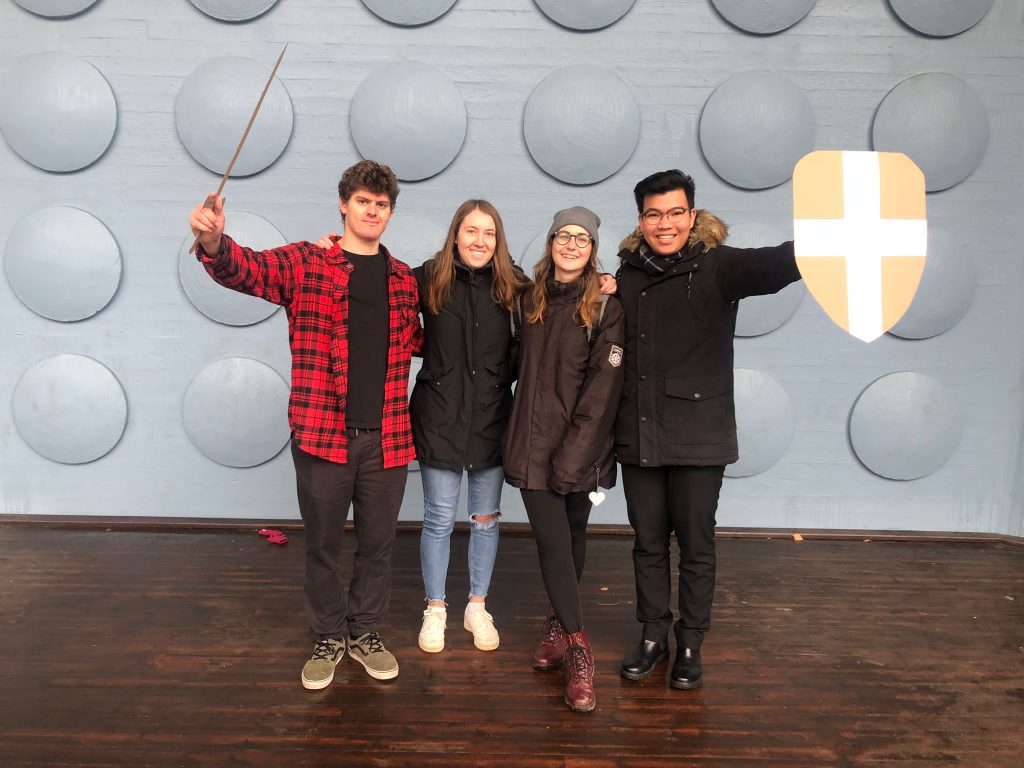
The third archetype unit explored is composed of the Male Lover/ Female Lover Archetypes.
Here the Addicted Lover and the Seductive Lover are the active poles whereas the Impotent Lover and the Frigid Lover are the passive poles. The Addicted Lover is always looking for the perfect experience but never experiencing things fully. As a leader, he has a big team of different players, but he doesn’t know any of the players well. He will use different team sports as a tool to gather people and be a leader of a group. The Seductive Lover is focused on love, creativity, and beauty. She is full of the sexual energy of Eros. As a leader, she always uses manipulation of people to get to the top and to achieve success. She uses the ”femme fatale” attitude and dancing to manipulate others and therefore achieve her own success. The Impotent Lover sees everything in grey, is depressed, has no passion for life, and may even feel shame when indulging in life’s pleasures. As a leader, he has low energy, and it is hard for him to build relationships with team members. He will use individual sports to focus only on himself. The Frigid Lover is shutting down and has no expression. She cannot build up relations, is selfish on her own, and focuses on herself. As a leader she has uses unemotional top-bottom-delegation and is no team player. She will use hiking to be on her own and focus on her own success.
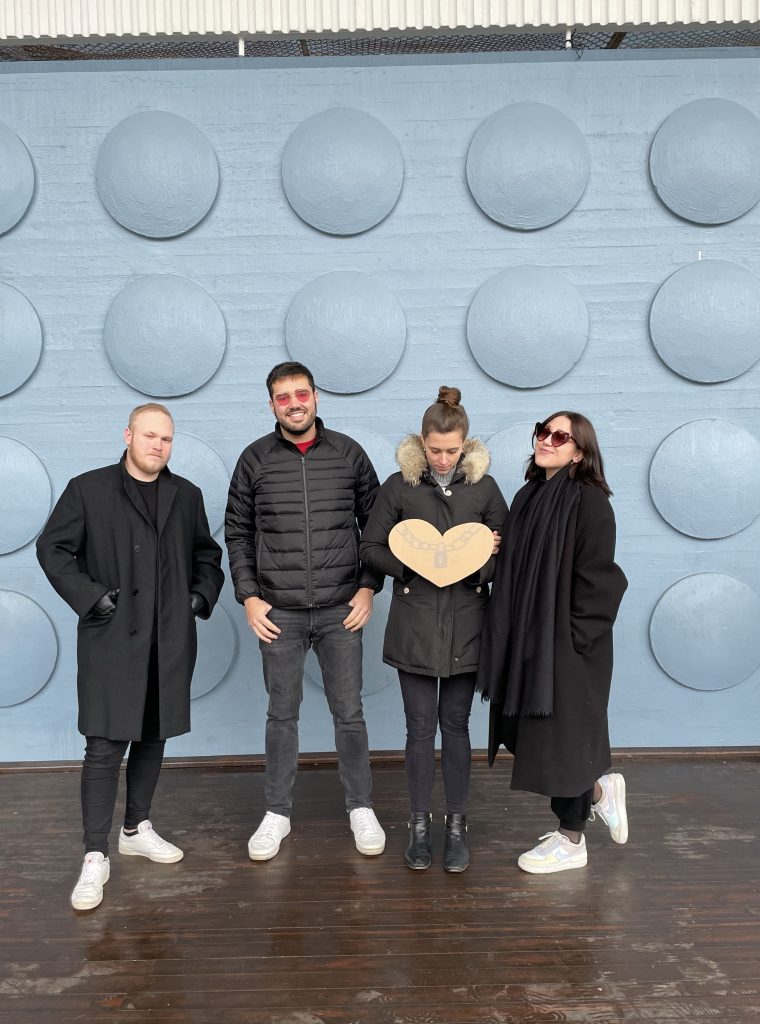
The final archetype unit we present is the King/Queen Archetype. The King and Queen as a Tyrant are the active poles whereas the Weakling King and Queen are the passive poles of this archetype. A male tyrant King is on an inflated ego and born from insecurity and lack of centeredness. He is dominant and intimidates others. As a leader, he wants to be appreciated and confirmed. With the artistic corner of doing physical exercises, he can get his head clear and brings him into a state close to meditation. Also, the feminine tyrant Queen is compulsively dominant and wants to be feared. She does not want to listen to others’ ideas if avoidable. She is narcissistic, arrogant, and demands to be worshipped. The artistic corner of coding and programming made it more efficient while only thinking logically. Thus, it is a very reliable and demanded leader. Here we decided to integrate A.I. as one of the archetypes because of its high importance for leadership in the future. The weakling King is not secure in himself which leads him to seek the approval of others doubts himself and can rely on counselors for big decisions. Also, paranoia is always around. He uses Reiki meditation for better decision-making and to know himself better to be successful as a leader. The Weakling Queen is a submissive and indecisive character and is constantly scared. In bigger discussions, she stays in the back and does not engage too much. She is in constant fear of being overthrown. With artistic gymnastics, she learned to combine different skills and get mentally and physically strong which can make her a better leader.
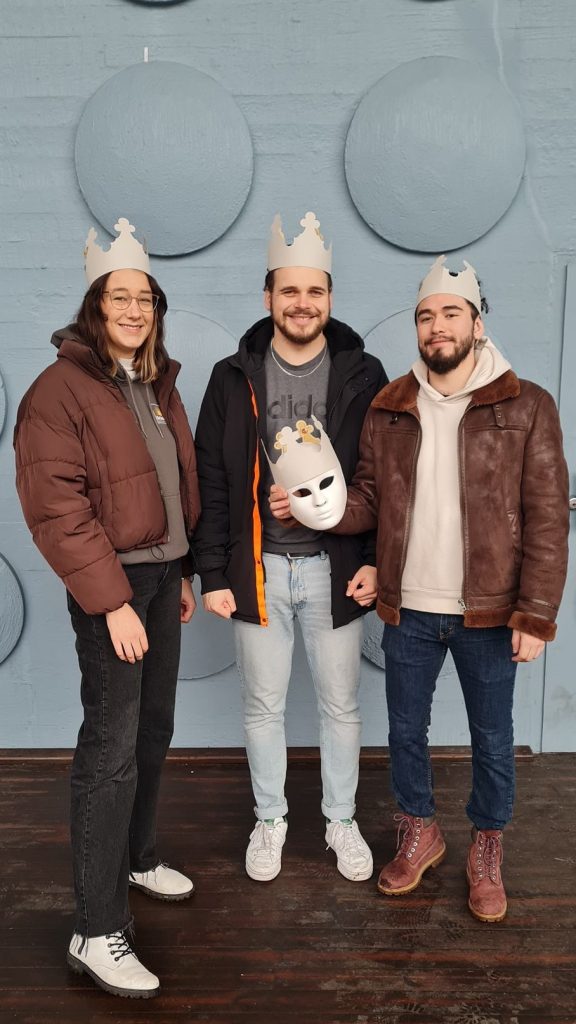
Movement 4 – Phase 4. Co-Creating and the awareness phase: prototyping the new with renewed AWARENESS, our work in a ‘’corto’’ video
Our Purpose Awareness
With the aim to practice awareness both on an individual and collective level, and to show to the public our research and the way theories have been experienced and embodied, we decided to produce a video, a ”corto”. It is our visual contribution to this story, in which we present how the inclusion of all the energies, male and female, of the archetypes unit in a leadership process can support the processing of complexity by involving feelings, emotions, artistic attitudes, and inner talent.
Our Vision Awareness
The material actualization of these concepts and the related interactions was an articulate work. We had to hold different meetings to establish democratically and among the entire team how our story was going to be reflected on the screen. Two extra afternoons of collective work, a presentation, an assembly, and many messages and emails… training our communications skills to pursue our vision, and what most important to transform it into something tangible. First, we decided to combine the strength of color images with black and white images, to enhance the story (the archetypes before and after our studies). Our inspiration was the Queen’s video ‘Bohemian Rhapsody‘.
Secondly, we wanted to show each archetype in his/her different phases (shadows), and the different units all in one.
A.I. Awareness
As mentioned above in the paper we decided to integrate artificial intelligence in this work because it represents an important aspect for the future of leadership and humanity. An intriguing challenge! We felt to call it with a feminine human name: Olimpia. We combined it with the Tyrant Queen Archetype corresponding to the strong A.I.
Marcella gave us a white mask to represent her capabilities in Carl Jung’s theoretical framework. Victor, our classmate studying computer science taught us that there is a weak A.I. – the one that is focused on performing specific tasks, and a strong A.I. – the theoretical, and most seen in movies, a form of artificial intelligence equal to humans and develop self-awareness. This is important to know since we need to differentiate between what is feasible and what is not regarding the real capabilities of today’s A.I.
In this perspective during the last day of the course, Marcella introduced us to a recent event organized in Finland, called ”Aurora”, where Sophia the Robot, a humanoid, has been presented for the first time with the feminine gender. What a surprise! Our intuition with our Olimpia was confirmed!
Human Social Intelligence Awareness
Another interesting point was about the choice of the music/soundtrack. We couldn’t use copyrighted content or resources, so we looked for royalty-free sources. In this way, the debate arose on how to organize the music and the common thread: the same melody but at different points for the beginning and the end, each archetype a different song, all instrumental. Our aim was to offer to the public the experience of a great orchestra playing the ”music” of the energy of the archetypes, but with a clear definition of the use, meaning, and importance of every single instrument.
Our Arts & Hobbies Awareness
We decided to present the archetypes’ energies by combining them with our personal arts, hobbies and to play this beautiful story at the Jyväskylä summer theater. We photographed the entire group from behind to show the beginning of our transformative learning experience, when we still did not know the archetypes, and then from the front when we became familiar with them and we developed our study and project.
Our Collective Awareness
Project management and a few technical problems that have arisen have been solved during sessions and meetings, with the help and the responsibility of each one of us, the entire class. Some students were in charge of organizing the script, others of reciting it, while others were in charge of organizing and sharing the graphic material to avoid problems or loss of images. The result has been a beautiful, understandable story that reflects all the paths that we have followed during the learning of how mindful leadership dynamics can process complexity by fusing the archetypes’ energy irrespectively from the gender and the stereotypes with an artistic and creative attitude.
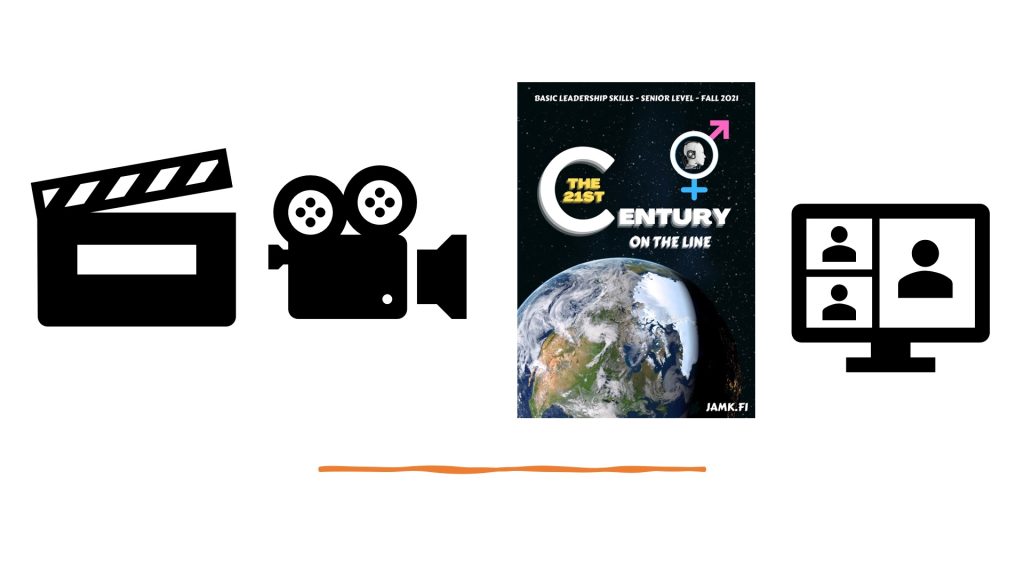
Our ”corto” titled The 21st Century on the Line is available in the dedicated area ”See more – Leadership videos”
Movement 5 and Phases 4+1. Co-Evolving and the New Leadership MONDO: embodying the new in the ecosystem, arts, hobbies, contemplative practices… the seeds of spirituality, business, and technology are blooming
At the end of our journey, we wanted to see how the class had progressed and what they had learned during the sessions of this educational journey. To observe this, we created a second survey for all participants of the course in addition to the first survey. This helps us to create important points and data for the future. The following survey was created by Marie-Christin and Linda. Three questions were asked:
1. Can you relate to any of the archetypes we used in our Leadership project? If yes, which one and why?
2. How does your hobby influence your leadership attitude/style?
3. How do you think your hobby can be useful to potentiate an archetype?
Looking at the answers of all participants, the development and learning development throughout our journey can be seen clearly. Regarding the first question, it can be said that all of us have many different archetypes inside and can relate to them. Most responses have shown that we can not only relate specifically to one archetype, but to multiple ones, regardless of gender and pole. We can highly relate to different attributes and expressions that characterize the archetypes. Exemplarily, some responses to our survey are shown below:
“One archetype I can relate to is the Queen because of characteristics such as loyalty and confidence. Furthermore, I would say that I can relate to the Amazon archetype because of independence and strength and fighting for what I believe/think”
“Yes, I can relate to the king. Because in my life I try to use communication as a tool to guide and lead people and to network. I also try to treat people fair and to be a good role model”
“I can relate to every archetype in different ways, with a different part of my temper.”
Looking at the second question, on how the own hobby influences the leadership attitude/style, it can be seen that our personal life has a strong influence on how we lead and behave as a leader. Many different influences have been named such as being a better team player, having more discipline, being more empathetic, communicating better, and being calmer. Again, some direct responses to our survey are shown below:
“My hobby is music. When I’m playing some instrument the calm came to me, it makes me think more about the situation from another perspective, be relaxed and patient. It’s a kind of tool to understand the world and be more empathic”
“My hobbies are sports and gaming. I think both hobbies require teamwork, so I think that that would help my leadership as well.”
“My hobby is to go to the gym and lift weights. With this hobby, I had to develop high discipline and have to go out of my comfort zone on an average basis. I have to be strict to myself to achieve the best results but also forgiving to myself when I don´t reach my full potential.”
As already seen above, the different archetypes can be also displayed with our specific artistic corner and can potentiate them. Here especially words such as more energy, a stronger mind-power, higher trust, and a stronger loyalty are fallen. Again, some insights into the participant’s answers are shown below:
“My arts & hobbies can potentiate an archetype, meant as a system of energy, by offering multiple dimensions of expression to support the final transformative mindful direction and action.”
“It can be useful to potentiate my archetype in a way of being on my own and trusting myself. It also expresses strength and independence. It gives me peace and I can be on my own.”
“My hobby worked very closely with the King/Queen archetype. Rules, structures, and orders were very important and always followed, the structure was quite hierarchical. At the same time, everybody had great trust in the coaches who were the leaders of the group”
Our conclusive thoughts
‘’Our Basic Leadership Skills story is based on the link between leadership and the complexity of each archetype you could encounter or become.We know there are some archetypes that are opposite, like art and A.I. are opposed, in A.I. it’s science and intelligence of mathematics, in arts, it’s feelings and heart that talk. But they can complete each other, we all need a good balance between everything to be completed…’’ – Tara
‘’In my leadership journey, I get to know different kinds of Art that influence my personal growth. First of all, I thought my art would be hiking, because in no other environment I feel so connected to myself and the goals that I want to achieve. During the time I realized that it’s complex to reduce my leadership journey to one kind of art. There is a technical side, like the AI, that helps to reduce complexity in leadership. Furthermore, on the personal side, my daily yoga practices, and running sessions support my leadership skills’’ – Linda
‘’Leadership for me comes with high complexity in many corners. Everyone’s specific art can help to express the archetypes all of us have the insight to be a leader and to understand and handle the complexity. Nowadays also, A.I. plays an important role in Leadership and needs to be considered. ‘’– Marie
‘’For me, leadership is something complex because we all have our archetype in terms of leadership, and we must be aware of that and try to mix all of them to become a complete leader. We can complete it with a touch of our art, it can be the dance for expressing our feeling or whatever. And maybe in the future, the leader can be an A.I. ? We will see … ‘’ – Julie
‘’Leadership skill can be thought of as an object that has a shape or an invisible object. The complexity of leadership is not how we lead a team or a company, but how we communicate emotions and motivations to them. Humans have a lot of ability to change and change, can draw, can play, can run, or can walk. All of the above forms I call arts because it is a motivating force from the heart. It’s just that we create artificial intelligence technology in the leadership field, but what we need is more emotion. We are in the line of the 21st century, we will connect.’ – Ky Anh
‘’…Our journey was all about leadership and coping with the complexity of life. We’re facing many challenges every day and have to cope with them while still enjoying the process. In class, we learned to use our arts, the archetypes, and new technologies, such as A.I., to become better leaders…’’ – Kira
‘’…in leadership there are multiple power positions. Today everything is interconnected, thus there is a lot of complexity. People struggle to understand the structure and the stress drains the energy of people. However, people react differently to situations as per their archetype which makes leaders creative and brings out their art to solve these complex behaviors. This is when A.I. Was introduced, A.I. Is one such piece of art that helps simplify complexity with 1 command. That is the beauty of 21st century…’’ – Pranil
‘’…the complexity of the future of leadership is a process that can be transformed through the re-discovering of our human ancient inner energy. By developing and balancing our archetypes with the use of our artistic attitudes we can contribute to shaping a more universal human-designed society supported by – not led by – the algorithms of A.I….’’
– Marcella
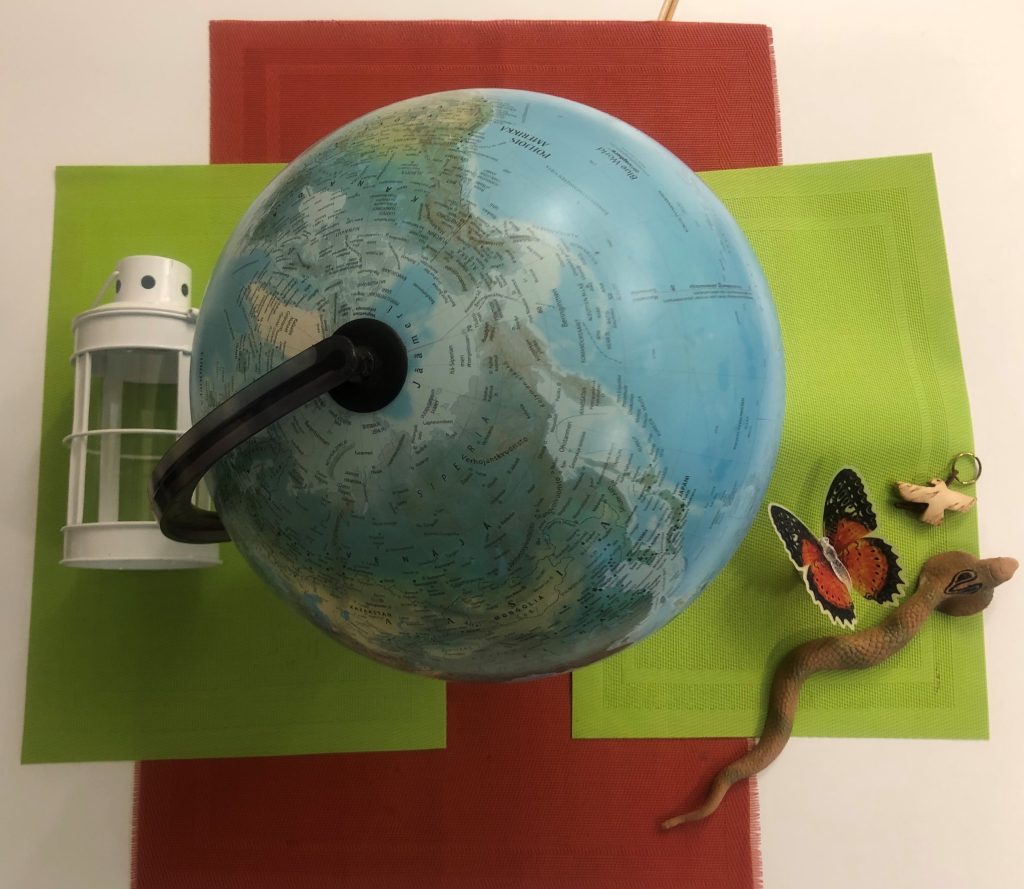
Sources selection
Aries, E. 1996. Men and women in interaction: Reconsidering the differences. Oxford University Press.
Blake-Beard, S., Shapiro, M. and Ingols, C. (2020), “Feminine? Masculine? Androgynous leadership as a necessity in COVID-19”, Gender in Management, Vol. 35 No. 7/8, pp. 607-617. https://doi.org/10.1108/GM-07-2020-0222
Daft, R. 2014. The leadership Experience. Stamford: Cengage Learning
Eskola, A. 2017. A framework for managing complexity in higher education. In Isman, A. (ed.) International Teacher Education Conference Proceedings Book. Harvard: ITEC International Teacher Education Conference. Turkish Online Journal of Educational Technology, Special Issue for ITEC 2017, 1-6. http://www.ite-c.net/publication_folder/ietc/ietc_itec_2017_v1.pdf
James, R.S. 2014. The hour of the Stranger in Thomson-Salo, F., & Palerm Mari, E. (Eds.). (2013). Masculinity and Femininity Today (1st ed.). Routledge. https://doi.org/10.4324/9780429477102
Lawson, T.T. 2008. Carl Jung, Darwin of the Mind, Taylor & Francis Group. ProQuest Ebook Central, https://ebookcentral-proquest-com.ezproxy.jamk.fi:2443/lib/jypoly-ebooks/detail.action?docID=689883.
Moore, R. L., & Gillette, D. 1990. King, warrior, magician, lover: Rediscovering the archetypes of the mature masculine. San Francisco: HarperSanFrancisco.
Portko, S. “Our Connection To Something Bigger: The Archetypes of C.G. Jung” – Lecture at Grand Valley State University. YouTube video https://youtu.be/gAE4bFKpUlA
Scharmer, O., & Kaufer, K. 2013. Leading from an emerging future: from eco-system to ecosystem economies. San Francisco, CA: Berrett-Koehler.
Zoccoli, M. 2017. Mindful Leadership at Fratelli Branca Distillerie Srl. Master’s Degree Programme in International Business Administration. Jyväskylä: JAMK University of Applied Sciences. https://www.theseus.fi/handle/10024/134785
Zoccoli, M. 2018. Flying on the Eagle. Millennials’ educational journey into Mindful Leadership. JAMK Publications. https://www.theseus.fi/handle/10024/151348
Zoccoli, M. 2019. Connectivism, the pedagogical social fabric, and the pipe as a knowledge and skills conductor in the professional identity formation of the student in higher education in the 21st century. https://verkkolehdet.jamk.fi/ev-peda/2019/11/02/connectivism-the-pedagogical-social-fabric-and-the-pipe-as-a-knowledge-and-skills-conductor-in-the-professional-identity-formation-of-the-student-in-higher-education-in-the-21st-century
Zoccoli, M. 2019. Creating Leadership e-Magazine. JAMK online publications. eMagazine online https://verkkolehdet.jamk.fi/creatingleadership/
Zoccoli, M. 2020. The Apple & The Candle. Human students transformative leadership experience. [Spirituality – Business – Technology] – JAMK Publications eBook Series. https://www.jamk.fi/fi/Tutkimus-ja-kehitys/JAMKin-julkaisut/Julkaisuja/the-apple–the-candle–jamkpublications285/
Website:
futurethinkers.org
Archetypes videos are available on YouTube:
– The King Archetype – The Crown of Mature Masculine Psyche
– Reclaiming The Warrior Archetype in Modern Masculinity
– The Magician Archetype: Rediscovering The Sacred Beyond the Mundane
– Accessing The Most Repressed Archetype In the Masculine Psyche: The Lover
psychologistworld.com
Carl Jung: Archetypes and Analytical Psychology – Exploring the realm of Carl Jung’s collective unconscious and the archetypes that live within it. https://www.psychologistworld.com/cognitive/carl-jung-analytical-psychology
HBR.org
The Different Words We Use to Describe Male and Female Leaders by David G. Smith, Judith E. Rosenstein, and Margaret C. Nikolov https://hbr.org/2018/05/the-different-words-we-use-to-describe-male-and-female-leaders
Areena Yle – Finland areena.yle.fi
Aurora – tulevaisuustapahtuma tunturissa
Mikä on algoritmin sukupuoli? https://areena.yle.fi/1-50987535
Cover page image description from the author HO Ky Anh
“In this universe, everything is in harmony with each other, supporting each other. Therefore, in each of us, our nature has a certain heterosexual nature. My purpose is to make male and female symbols that are opposite in color and intertwined, affirming that we always have hidden opposite gender identities. In the middle I have inserted a white circle and a robot face icon because this is a new era, a new century has opened, what man-made things can be as revolutionary as intelligence artificial, it’s the harmony between male and female located in a machine that uses the human brain. Affirm that in every human being there is always the ability to lead and express the feelings of a person of the opposite sex”. – HO Ky Anh